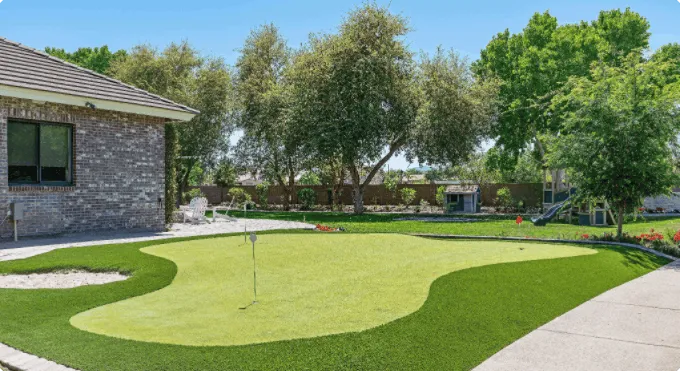
- Afrikaans
- Arabic
- Belarusian
- Bengali
- Czech
- Danish
- Dutch
- English
- Esperanto
- Estonian
- Finnish
- French
- German
- Greek
- Hindi
- Hungarian
- Icelandic
- Indonesian
- irish
- Italian
- Japanese
- kazakh
- Rwandese
- Korean
- Kyrgyz
- Lao
- Latin
- Latvian
- Malay
- Mongolian
- Myanmar
- Norwegian
- Persian
- Polish
- Portuguese
- Romanian
- Russian
- Serbian
- Spanish
- Swedish
- Tagalog
- Tajik
- Thai
- Turkish
- Turkmen
- Ukrainian
- Urdu
- Uighur
- Uzbek
- Vietnamese
artificial vertical garden installation
Nov . 20, 2024 10:40 Back to list
The Art of Installing an Artificial Vertical Garden
As urban spaces continue to expand and natural landscapes dwindle, the appreciation for greenery within our living and working environments becomes increasingly vital. One innovative solution gaining popularity is the artificial vertical garden, which allows for the incorporation of lush greenery without the traditional challenges associated with living plants. This article explores the installation of artificial vertical gardens, highlighting their benefits, key components, and the installation process.
Understanding Artificial Vertical Gardens
Artificial vertical gardens consist of synthetic materials designed to mimic the appearance of real plants, providing an aesthetic appeal similar to natural foliage. These installations can be seen in various environments, including residential homes, commercial buildings, and public spaces. The primary materials often utilized include high-quality plastics and textiles, which are UV-resistant and weatherproof, ensuring longevity and visual vibrancy.
Benefits of Artificial Vertical Gardens
1. Low Maintenance One of the significant advantages of artificial vertical gardens is their minimal maintenance requirements. Unlike live plants that need regular watering, pruning, and care, artificial gardens only require occasional cleaning to maintain their appearance.
2. Versatility Artificial vertical gardens can be designed to fit any space, whether it's a small apartment or a large corporate office. They can be easily customized in size, shape, and color, making them adaptable to various design themes.
3. Longevity With advancements in technology and materials, artificial plants can withstand harsh weather conditions without fading or deteriorating. This durability means that an artificial vertical garden can retain its beauty for many years.
4. Allergy-Friendly For individuals with allergies or sensitivities to pollen and other plant-related irritants, artificial gardens provide a perfect solution, allowing them to enjoy greenery without the risk of allergic reactions.
5. Sustainability While using synthetic materials may seem counterintuitive to sustainability, the longevity and reduced resource use for maintenance contribute positively to an eco-friendly approach. Additionally, artificial gardens can help insulate buildings, reducing energy consumption.
Components of an Artificial Vertical Garden
artificial vertical garden installation

1. Framework The foundation of a vertical garden is crucial. A sturdy frame or wall-mounted system made from durable materials ensures that the artificial plants are securely anchored and can withstand environmental factors.
2. Plant Selection Choosing the right artificial plants is essential for achieving a natural look. High-quality replicas of ferns, succulents, and flowering plants are popular selections, often arranged in a way that mimics natural growth patterns.
3. Backing Material The backing for the vertical garden serves both functional and aesthetic purposes. Various materials, such as wood, metal, and composite panels, can be used to create a visually appealing base that supports the plants effectively.
4. Lighting To enhance the appearance of an artificial vertical garden, strategically placed lighting can add drama and depth. LED lights can be used to highlight specific areas, providing a warm and inviting glow, particularly in indoor installations.
Installation Process
1. Planning Begin by assessing the space where the vertical garden will be installed. Consider factors such as light availability, view, and intended design aesthetic.
2. Framework Construction Build or install the framework based on your design. Ensure it is securely fastened to the wall or surface, reinforcing it as necessary to support the weight of the artificial materials.
3. Arranging Plants Carefully arrange the selected artificial plants in a visually appealing manner. It is recommended to group plants by color, texture, and height to create a dynamic and natural look.
4. Securing Elements Once the arrangement is complete, secure the plants with adhesive or clips to ensure they remain in place. Double-check for stability.
5. Final Touches Install any additional features, such as lighting or decorative elements, and perform a final inspection to ensure everything is positioned correctly.
In conclusion, the installation of an artificial vertical garden is not merely about enhancing aesthetic appeal—it is an opportunity to bring the calming presence of greenery into our concrete jungles without the burdens of live plant care. With careful planning and execution, an artificial vertical garden can become a stunning focal point, enriching environments and promoting well-being.
-
The Benefits of Artificial Turf for Indoors
NewsJul.15,2025
-
How Artificial Grass Suppliers Ensure Quality Products
NewsJul.15,2025
-
Artificial Grass and Pets: A Space for Relaxation
NewsJul.08,2025
-
Balcony & Outdoor Decoration with Artificial Grass
NewsJul.08,2025
-
Best Indoor Artificial Grass for Home
NewsJul.07,2025
-
Best Pet Turf for Dogs: Safe & Durable Artificial Grass Options
NewsJul.07,2025
Products categories









